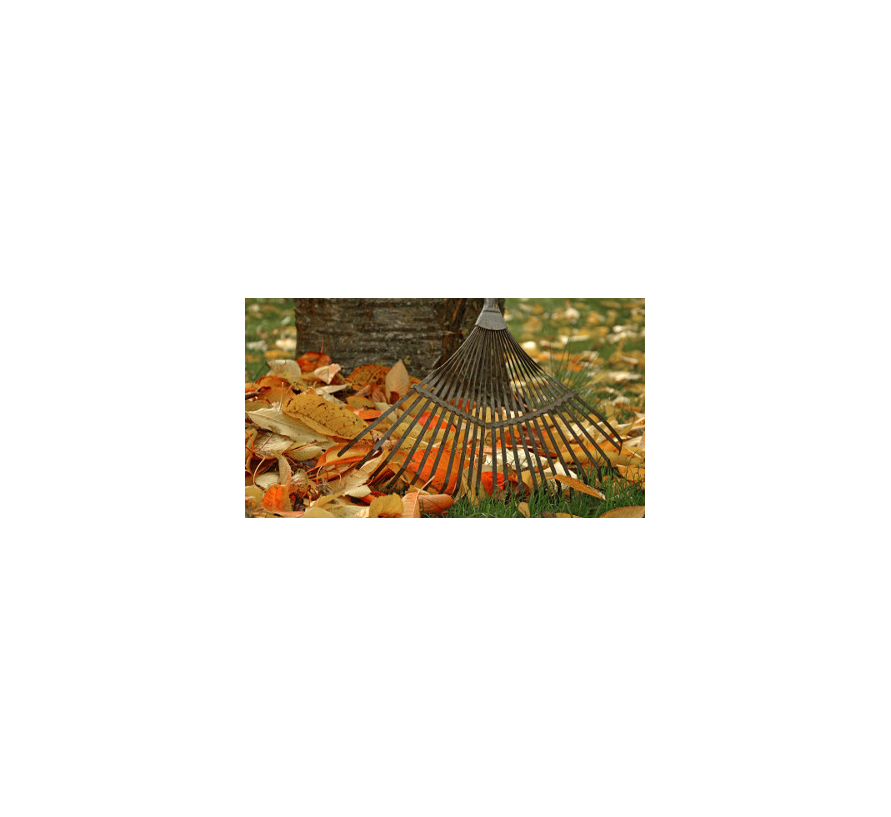PREPARA TU CÉSPED PARA EL INVIERNO EN SIETE PASOS
Do you want your lawn to resist the cold of winter well and strongly regrow during spring? In this post we are telling you everything you need to know.
Cold is the enemy of your plants. Unless it is a species that blooms at low temperatures, you will need to take action to protect them during the winter. And that also includes the lawn.
Preparing the lawn for winter requires several maintenance tasks that we will carry out throughout the autumn. The goal is not only to improve its resistance to cold, but to make it grow stronger when spring comes. What do you prefer to find when the rest of your plants bloom? A green and revitalized lawn, or one with yellow and bare spots?
If you want to know how to get your garden to withstand the cold, read on.
Tasks to prepare your lawn for winter
Mowing
During winter, lawn grows slower. In the colder months we will hardly need to mow it.
The last maintenance mowing will be carried out between the end of October and the beginning of November, before temperatures fall. At this time we will leave grow higher than usual. Thus, we will ensure that the roots are protected from the cold. With a mowing height of about two or three inches will be enough.
Remember to always mow it when it is dry, to avoid the appearance of fungi.
Scarifying and aerating
Naturally, a layer of organic matter is formed between the leaves of the grass and the soil, consisting of roots, stems and other organic remains. This layer is known as ‘thatch’, and is part of any healthy lawn.
However, lack of maintenance can cause this layer to grow too much. A thatch with more than 1” or 2” thick can endanger the health of our grass. As it is a compact and impermeable mass, it prevents water, oxygen and fertilizers from reaching the roots. Its presence weakens the grass and makes it harder for us to prepare it for winter.
If the thatch layer has grown too much, the solution is to scarify the garden. Scarification consists in scratching the surface of the soil, making cuts of about three or 2” deep.
By scarifying, we decompress the the roots of the lawn and improve soil drainage. It is important to remove with a rake the remains of thatch that we have removed to avoid re-filling the gaps left by the scarified.
Another important task is aeration. With a gallows or specialized tool, we make several holes throughout the ground. Thus we also contribute to the oxygen reaching the roots.
Remember that both scarification and aeration should be done during the early autumn, when there are still average temperatures. If you wait too long, the lawn will not have time to recover for the winter.
Gravelling
After aeration and scarification, we can take the opportunity to apply a layer of gravelling. The gravelling is a mixture of mulch, sand or peat that will fill the gaps left in the ground.
By gravelling, we ensure that the soil maintains a good level of drainage. If we have bare spots, it will also be time to reseed.
Fertilization
Although in the cold season the leaves of the grass stop growing, the roots do not. To resist the cold well and strongly regrow during the spring, it is very important to apply a layer of fertilizer throughout the autumn.
By fertilizing, we will provide nutrients to the roots so that they grow in depth and extension, which will strengthen our grass.
After the fertilization, do not forget to water so that the fertilizer seats completely.
Raking the dried leaves
If you have deciduous trees or plants in your garden, during the autumn you will see how it fills with leaf litter. When rotting, these leaves promote the appearance of fungi in the grass and increase the thatch.
In order for your lawn to remain strong throughout the winter, it is essential that you remove these dry leaves. Do it as usual as possible, before the irrigation water and the rain turn the leaves into a solid mess and make their removal more difficult.
Remove weeds
Invasive species, such as dandelions, settle in our grass and steal water and nutrients. To prepare our garden for winter, we must eliminate them.
In addition to removing them manually, you can apply a selective herbicide. This way you will prevent weeds from rebounding during spring.
Irrigation
In winter the lawn grows slower, and therefore also needs less water. Depending on the area where you live, you may not even need to water it, since with the morning dew and the rain is more than enough.
In case you water, once it starts to get cold try to do it in the central hours, unlike in summer. This will prevent the water from freezing and damaging the leaves.
If you have an automatic programmer to control irrigation, you can install a rain sensor to stop watering while raining.
In Same Category
- Anti-stress plants: soothe your mind and body naturally
- NATURAL CHRISTMAS TREE: DISCOVER ALL ITS BENEFITS
- Why does my dog eats plants: the most common causes + tips to avoid it
- [Names of garden tools] List of the 9 essentials to take care of your garden
- TROPICAL PLANTS, EVERYTHING YOU NEED TO KNOW

 English
English Spanish
Spanish
Comments
Leave your comment